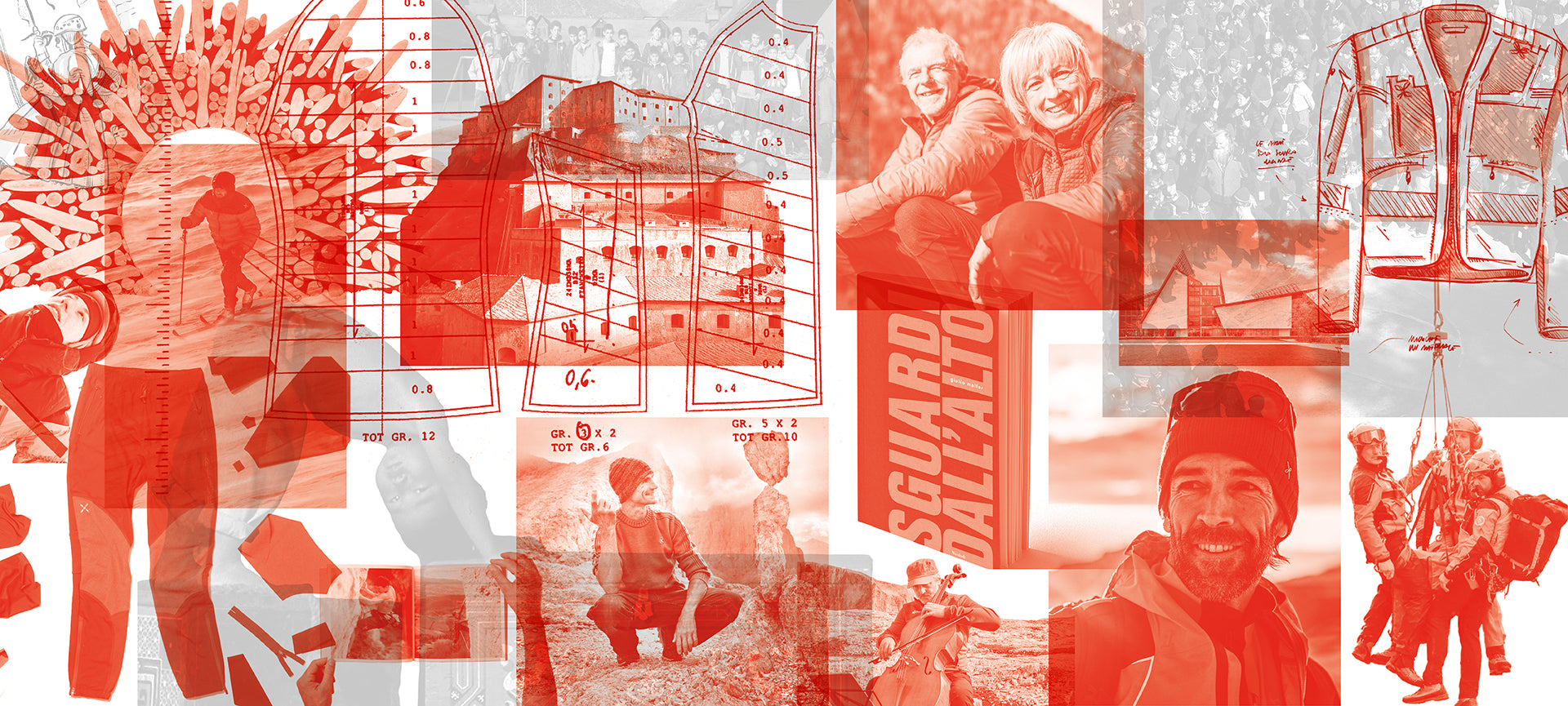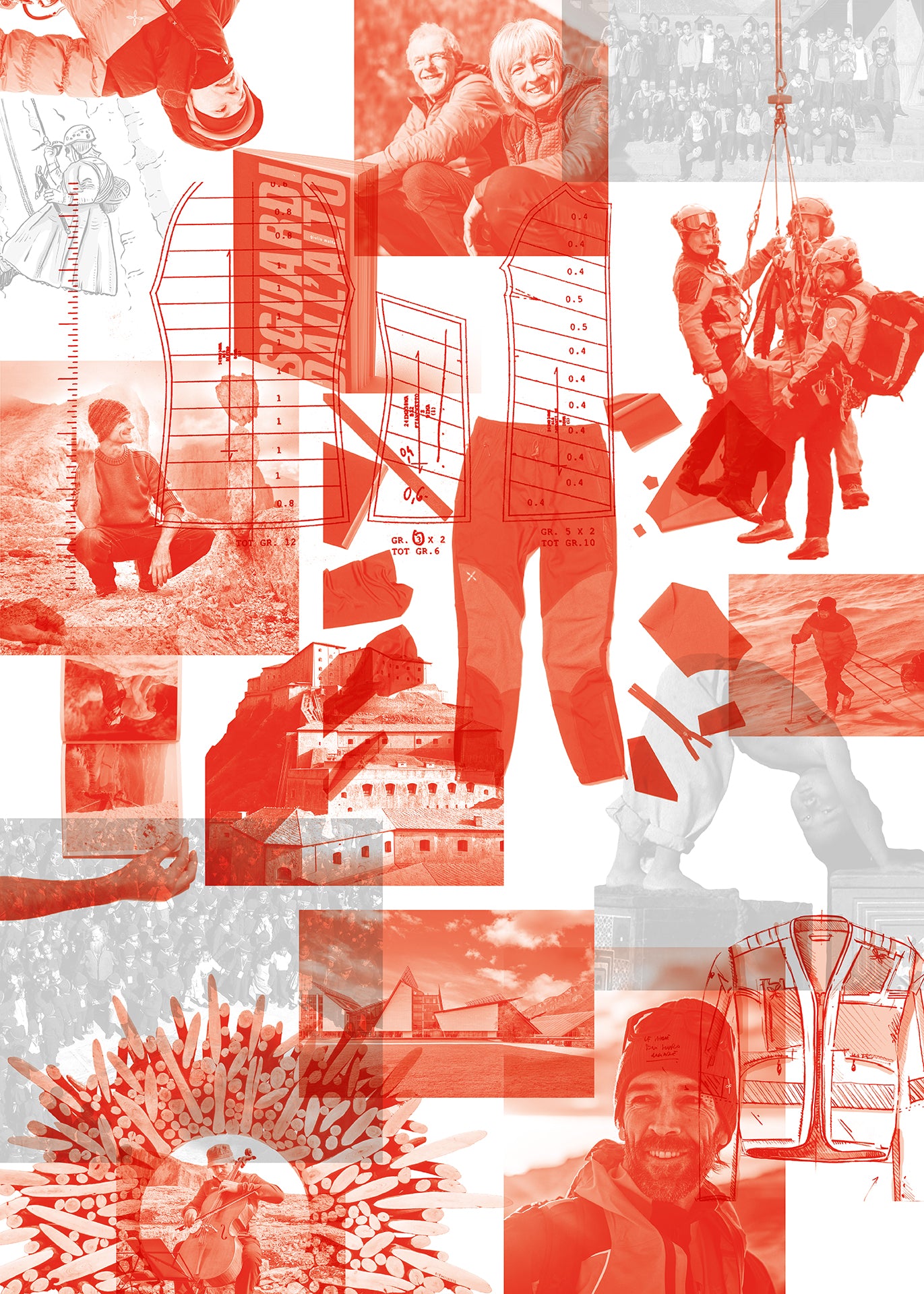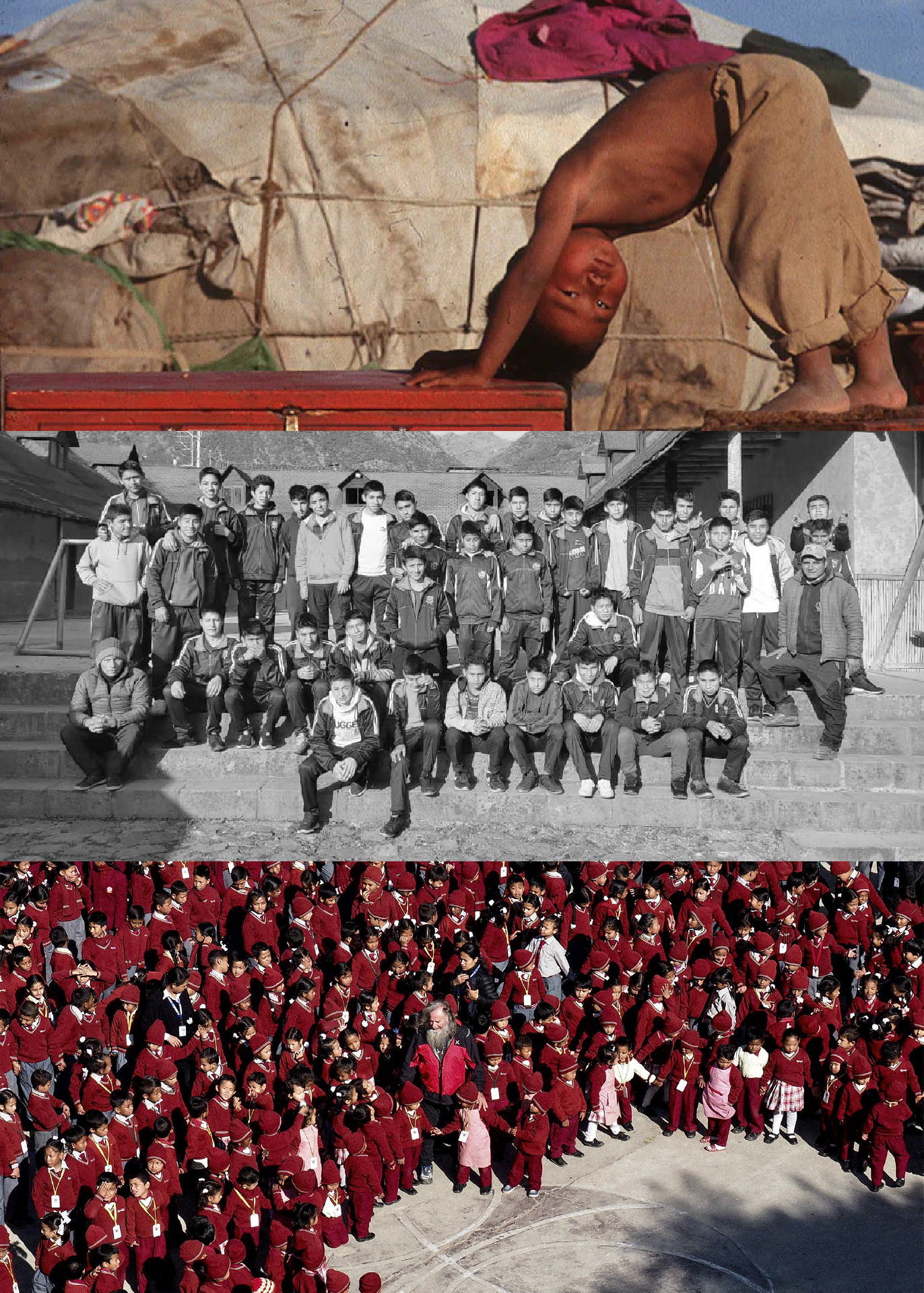

"We are human beings working for other human beings. We are passionate about outdoor life and the mountains. We are committed to honoring, respecting, and protecting people and the environment as living beings. We are free thinkers who are not afraid to share our thoughts, and above all, we are true to ourselves"
Twenty-five years may seem like a short time for a company.
Yet, if you try to list everything Montura has accomplished in just a quarter of a century, you'd find it difficult to write the last line without immediately realizing that more is missing.
Perhaps because it was born from a mindset not quite aligned with the traditional concept of entrepreneurship, or perhaps because its foundations were laid by eclectic people who were, by nature, unpredictable; all of this guided by one mission: "Doing things that others haven't done yet." This is how we can understand, at least in part, Montura's multifaceted nature, built on ideas and intuitions, sometimes bold moves, born from that unique forge and left free to evolve in any direction. Because humans, the explorers, are restless beings, in permanent search to satisfy their innate desire for knowledge.
"Searching for a new way," the company's motto, was coined as a natural consequence, a direct and immediate image of an approach that concretely reflected the vision just outlined. Since then, Montura has always managed to "be different," constantly seeking new paths and original solutions, quickly laying down several milestones in the world of technical apparel, and beyond.


One notable example is the Vertigo, born in 1999 when everyone was already making mountain pants, but no one had yet made... the Vertigo. Shaped in the field, with the collaboration of mountain rescue operators, climbers, mountaineers, and guides. Comfortable, multifunctional, and suitable for all vertical challenges, it was designed starting from the anatomy of the leg, placing pieces of different materials, stiff and not, according to movement. The result was the almost obsessive application of the concept of "ergonomics." It was
Montura's first form-fitting garment, now in its second version. Loved, envied,
copied.
Shortly after, Montura invented and patented the "Cross Section" technology, with staggered chambers to solve the problem of thermal bridges between one chamber and another in down jackets: with 30% less material and weight, you stay 30% warmer. Today, they call it sustainability and performance. Montura has been doing it since 2003.
A few years later came another iconic garment, the Skisky 2.0 Jacket, initially a gift for the Skialp 4 Valli Trophy, included in the race kit, but its success was immediate. What started as an experiment turned into a sought-after product in the ski mountaineering world.
Meanwhile, the Operator Jacket arrived on the scene, designed specifically for the needs of mountain rescue operators. Every pocket, every seam has a precise function, studied with those who would be using the jacket.


From there, a long series of insights, ideas, patented materials, andtechnologies followed, leading to Montura's extraordinary growth, placing it ina position of excellence in the outdoor market within a few years. A contributing factor was also an integrated and proprietary production chain,complemented by a network of absolutely original monobrand stores — the"Alpstation" and "Montura Store" — aimed at enhancing theexperience of connecting with the product. All of this is available to andlived by a community of people, both inside and outside the company, almost a"tribe," driven by the same passions and committed to shared values.But the concept of "searching for a new way" was not limited to clothing manufacturing. If Montura had to be different from all other companiesin the sector, the distinction couldn't be limited to the product. It also hadto concern the way of producing and relating to others, to the environment, andto the world. It had to consider an aspect that over time has become central tocorporate action, but which was not widely embraced at the time: the socialrole, the commitment to young people, to the most vulnerable in a community, tothe people of impoverished countries who watched Western mountaineers climbingtheir mountains but ignored their needs. Thus, the strong commitment to helpingthose, like Fausto De Stefani in Nepal or Ugo De Censi with the OMG in Peru,who wanted to lift the populations of extraordinary mountain areas such as theHimalayas or the Andes out of marginalization, was born. The"mission" naturally also involved culture, without which there can beno "conscious consumer, capable of distinguishing a well-made product,built with respect for others." From idea to realization, the step wasshort. Thus, "Montura Editing" was born. Even in its name, formulatedin somewhat unorthodox English, it revealed what "Montura" was meantto be compared to everyone else: imagination, artisanal care, and almostobsessive attention to detail, the scent of carved pinewood, eye contact, patson the back... This is how more than a hundred books, and just as many films,were created to speak to people's hearts. Always courageously addressinguncomfortable topics such as marginalization, disabilities, and genderinequality. And then there were exhibitions, festivals, and collaborations withimportant figures in the world of culture and solidarity."Searching for a new way" is also a commitment and a challenge forthe future. After these first 25 years, we have not reached a final goal, butmarked a milestone. We have outlined a path, which, looking forward, we followknowing that it may branch out in infinite directions. We will explore themall, with the desire to always stand out, rejecting conformity and constantlyseeking new ways to stay true to ourselves.
Because Montura is not simply... Montura.
NEROMONTURA COLLECTION








